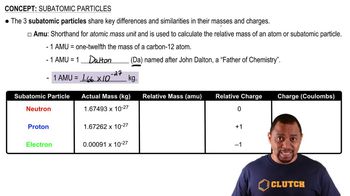Here are the essential concepts you must grasp in order to answer the question correctly.
Nuclear Reactions
Nuclear reactions involve changes in an atom's nucleus, resulting in the transformation of one element into another. These reactions can include processes such as alpha decay, beta decay, and gamma emission, where particles are emitted or absorbed. Understanding the type of nuclear reaction is crucial for predicting the products and balancing the equation.
Recommended video:
Balancing Nuclear Equations
Balancing nuclear equations requires ensuring that both the mass number and atomic number are conserved. This means that the sum of the mass numbers and the sum of the atomic numbers on both sides of the equation must be equal. Identifying the missing particle often involves calculating the difference in mass and atomic numbers between the reactants and products.
Recommended video:
Balancing Chemical Equations
Types of Particles in Nuclear Reactions
In nuclear reactions, various particles can be emitted, including alpha particles (helium nuclei), beta particles (electrons or positrons), and gamma rays (high-energy photons). Recognizing these particles is essential for determining what is missing in a nuclear equation. For instance, in beta decay, a neutron converts to a proton, emitting a beta particle, which affects the atomic number.
Recommended video:

 Verified step by step guidance
Verified step by step guidance


